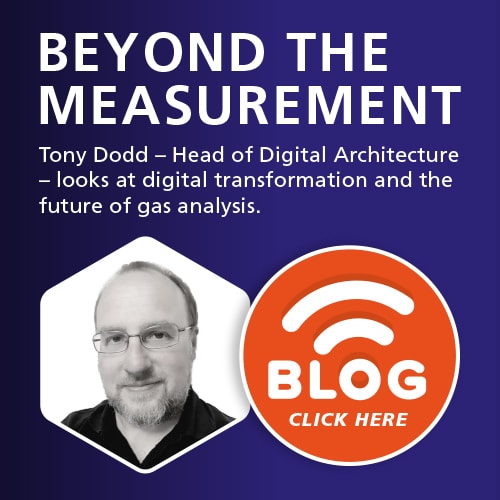Resources for process heater and furnace applications
Get more information about our products and application solutions for process heaters and furnaces. Download them now.
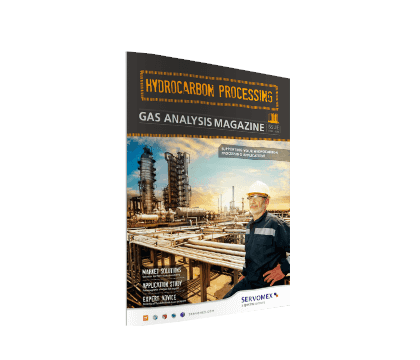
Hydrocarbon Processing Magazine Issue 03
HP gas analysis for flare stacks and coal to olefins conversion

Hydrocarbon Processing Magazine Issue 03
HP gas analysis for flare stacks and coal to olefins conversion
Remove from basket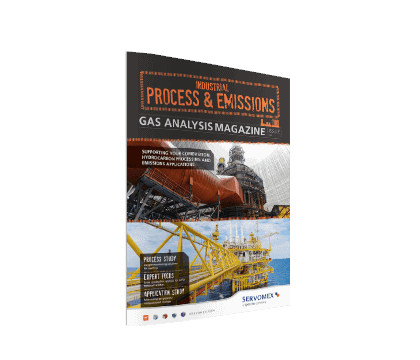
Industrial Process & Emissions Magazine Issue 01
Our magazine focused on power generation, hydrocarbon processing and emissions monitoring

Industrial Process & Emissions Magazine Issue 01
Our magazine focused on power generation, hydrocarbon processing and emissions monitoring
Remove from basket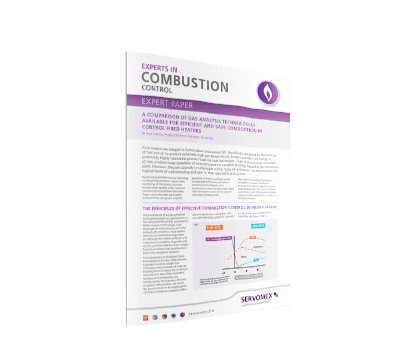
Combustion control expert paper
An expert look at the technologies available for efficient, safe combustion in fired heaters

Combustion control expert paper
An expert look at the technologies available for efficient, safe combustion in fired heaters
Remove from basket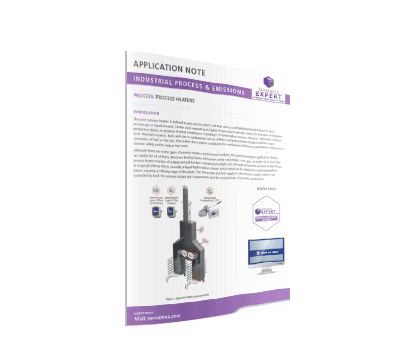
Application Note Process Heaters

Application Note Process Heaters
» Read more about: Application Note Process Heaters »
Remove from basketA vital process for generating high temperatures
Process heaters and furnaces are integral to many hydrocarbon processing and power generation applications. They are designed to allow fuel and air to react together, producing extremely high gas temperatures. In doing so, they use large quantities of fuel, generate emissions and can create a safety hazard for plant and personnel alike.
Optimization is vital for efficiency and safety
The key to combustion control in process heaters and furnaces is to optimize the air-to-fuel ratio. Using excess oxygen (air) leads to cooler burning, significantly reducing efficiency and increasing emissions. However, a low-oxygen, fuel-rich situation is potential source of explosions. Keeping the combustion reaction at the optimum point ensures safe operation while reducing both fuel costs and emissions.
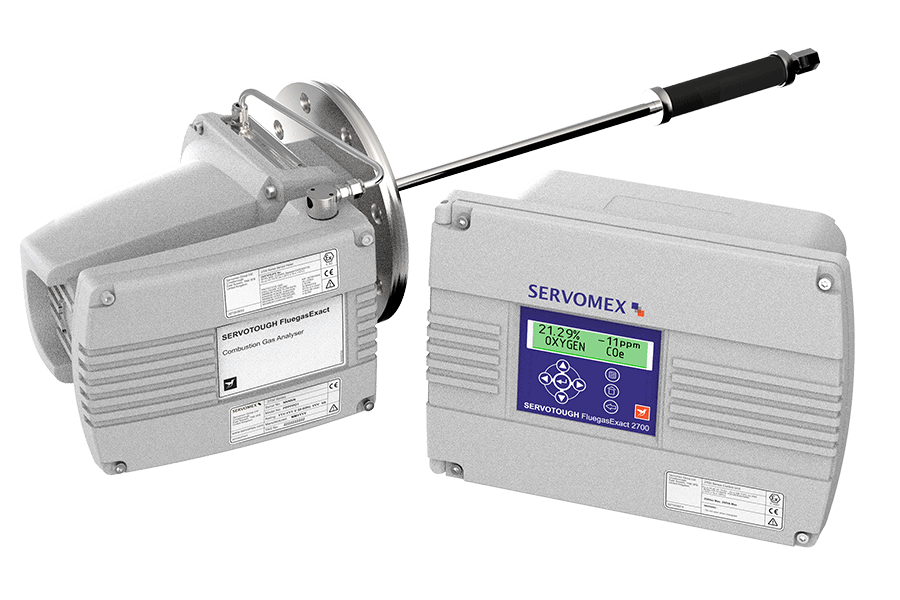
We have a choice of technologies to fit your application
Servomex provides a choice of analyzer technologies to support effective combustion control. Using a close-coupled extractive sampling principle, the SERVOTOUGH FluegasExact 2700 combines proven Zirconia sensing for oxygen and Thick Film Catalytic sensing for combustibles. This delivers an effective solution in a single analyzer. The SERVOTOUGH Laser 3 Plus Combustion uses Tunable Diode Laser (TDL) technology for in-situ measurements of oxygen, carbon monoxide, or both carbon monoxide and methane. This provides an average measurement across the flue, and is especially effective in supporting safety.
Our expert knowledge supports your heater process
The efficiency of your process starts with an efficient heater. Our gas analysis solutions are proven and trusted in industries around the world, with knowledge and experience that delivers the best results.
Versatile solutions
With a choice of Zirconia and TDL sensor-based products, we can supply the analyzer that best suits your application, providing the optimum control for your process heater.
Expert understanding
We know combustion, with a long history of providing solutions for heater-based process. This knowledge has enabled us to develop optimized solutions for combustion control in a range of process conditions.
Global support
To ensure your analyzer delivers peak performance and remains reliable throughout its operational life, we offer a service network that provides expert support wherever you are in the world.
Meet the experts

Karen leads the Industrial Process and Emissions Business Unit in providing solutions which support our customers as they overcome the challenges of making their processes safer, cleaner, and more efficient.
Karen Gargallo, Market Sector Manager IP&E
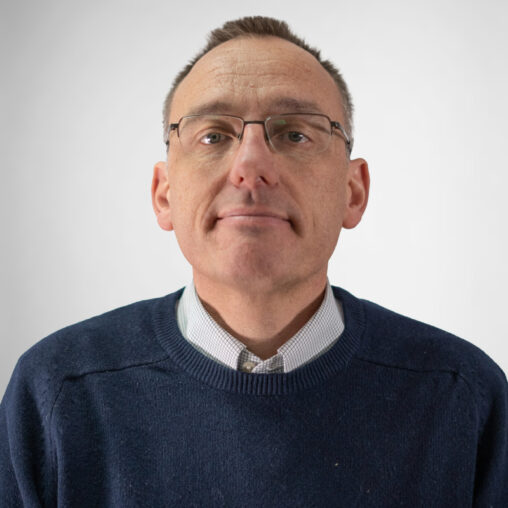
Responsible for managing the Global Applications and Development team, supporting all current Servomex products across Industrial, Purity and Semiconductor business areas. Keith has been working with gas analytics and instrumentation solutions for over 25 years, over 15 of them at Servomex.
Keith Warren, Head of Applications & Development
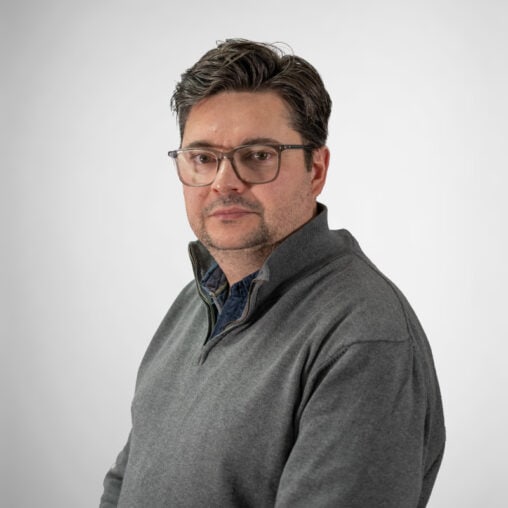
Leading the life-cycle management of our Spectroscopic analyzer range, Rhys is responsible for the development of the markets they serve, and the strategic growth of those technologies.
Rhys Jenkins, IP&E Product Manager, Spectroscopic Analyzers
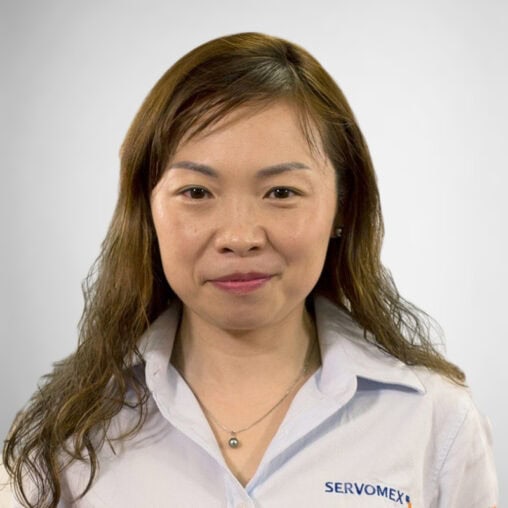
Overseeing the business development operations of our Industrial Process & Emissions team in China, Huiyu leads our pursuit of large international projects.
Huiyu Guan, Business Development Manager, IP&E, China
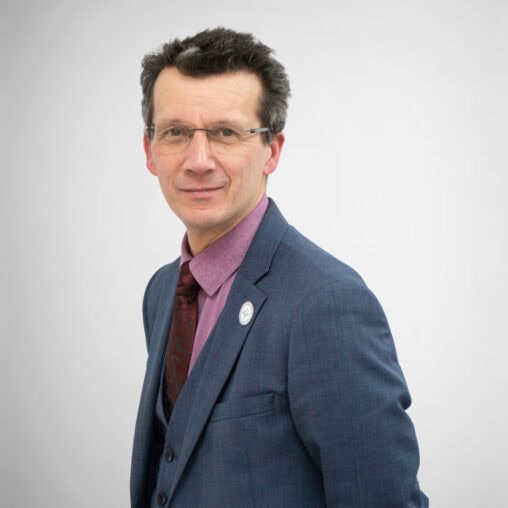
Stephen is responsible for managing the lifecycle of new Servomex Products, specifically, the introduction of new technologies into Servomex Analyzers. As STEM Team Leader he also coordinates the internal and external STEM program.
Stephen Firth, Product Manager- Strategic Projects
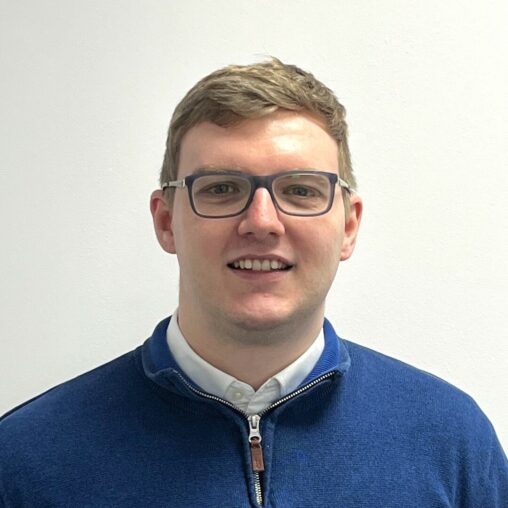
Responsible for managing our oxygen analyzers in the Industrial Process & Emissions sector, Luke has over a decade of experience at Servomex where he has worked in various roles, including sales, applications, and manufacturing.
Luke Purdie, Product Manager
Search Servomex Process heaters and furnaces analyzers
Refine by search term
Clear filtersRefine selection by:
Showing 7 of 7 Process heaters and furnaces analyzer products
4900 Multigas
SERVOPRO Safe Area
The 4900 Multigas is a high-performance CEMS analyzer designed for a wide range of multi-gas measurements.
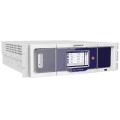
FluegasExact 2700
SERVOTOUGH Hazardous Area
Designed to measure O2 and COe in flue gases for improved combustion efficiency and reduced emissions.
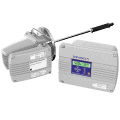
Laser 3 Plus Combustion
SERVOTOUGH Hazardous Area
Unmatched installation flexibility plus cost and performance benefits, ready for fast, accurate and responsive measurements in combustion and process control.
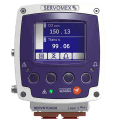
Laser 3 Plus Environmental
SERVOTOUGH Hazardous Area
Compact, high-performance Tunable Diode Laser (TDL) analyzer, specifically optimized for ammonia slip measurement
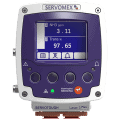
Laser 3 Plus Process
SERVOTOUGH Hazardous Area
Optimized for the fast, accurate and responsive measurement of process oxygen (O2) in hot or hazardous conditions.
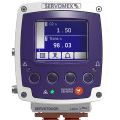
Micro i.s. 5100
SERVOFLEX Portables
Designed for the measurement of oxygen (O2) in potentially flammable gas samples. Certified to Zone 0 and Zone 1 and suitable for measuring percent levels of O2.
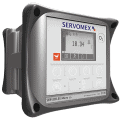
MiniMP 5200
SERVOFLEX Portables
A portable, safe area, mains or battery-powered gas analyzer offering accurate single or dual % level measurements of oxygen (O2) and carbon dioxide (CO2).
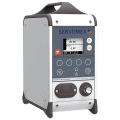
An ethical approach to business
Servomex’s values underpin everything we are and everything we do: they guide how we work, inform our decision-making and shape our culture.
The latest news in process heaters and furnaces
Stay up to date with what’s new in the world of process heaters, furnaces, and combustion control, including product releases and the latest application solutions.
Get the latest news, sign up to emails
You've been added to our newsletter
You've been added to our newsletter
Process heaters podcast
Application Development Manager Matt Halsey and Global Business Development Manager Stephen Firth examine process heaters and discuss common issues encountered by customers.
Application Development Manager Matt Halsey and Global Business Development Manager Stephen Firth look at typical process challenges, and how they can be overcome.
Process heaters transcript
MH: Welcome everyone to another Servomex podcast. Today we’re going to be talking about process heaters. My name is Matt Halsey, Application Development Manager at Servomex, and I’m joined today by our Business Development Manager for Europe, the Middle East, Africa and India, Stephen Firth. Hi Stephen.
SF: Good afternoon.
MH: So, process heaters, Stephen. Tell us what a process heater is.
SF: Well, in its basic form, a process heater is something that takes fuel, burns it, and produces heat, and the heat is used to, obviously, heat up a fluid of some description. They come in many shapes and sizes, from small package boilers generally used to produce steam or heat, all the way up to the big thermal crackers, ethylene crackers, that are used to produce ethylene from ethane, amongst many other things. And there’s a whole range of uses in the middle, but essentially we’re burning a fuel to produce heat, which is then used to either heat fuel or to drive a process.
MH: Yeah, and these things, these process heaters, they pop up all over the place. The vast majority of chemical plants and petrochemical plants have process heaters on them somewhere, either one or many.
SF: Yeah, I mean, there’ll be one or two big ones, 10, 20, 30 meter furnaces, and then there’ll be tens of smaller process heaters, probably two, three, four, five meter type furnaces, on your average refinery, chemical plant, polymer plant, plastics plant, but there are many, many of these in many, many forms, on many chemical applications.
MH: Yep, so just about everywhere. And really, they are the best way to reduce the heat that all these reactions and processes need to operate day to day. And they’re also one of the biggest polluters on any plant. These things are taking the fuel, they’re combusting the fuel, they’re oxidizing the fuel, they’re producing a lot of CO₂, a lot of other emissions. So, you know, on our topic of clean air, these things are of particular interest to us. We are following a very similar pattern, as we discussed in our in our last podcast, for those of you that listened on thermal power, where we’re looking to better control the combustion, so we’re increasing the combustion efficiency of the process, and cleaning up any other gases that are produced, and then ultimately, monitoring the emissions that are being emitted to the to the atmosphere.
So, one of the biggest challenges facing operators of these process heaters is probably the analysis equipment that’s chosen, which is very, very much dependent on the fuel that’s being burnt. So these process heaters can be fueled by a whole host of fuels – anything from natural gas, and syngas, fuel gas, sometimes solid fuel (though that’s quite uncommon), oil on the older heaters, and even waste gas, which really could be anything, anything that’s produced elsewhere on the plant that needs to be needs to be gotten rid of, can be used as a fuel source.
Okay, Steven, so let’s talk a little bit more about some of these fuels. So obviously, there are two sides of the spectrum. On one hand, we’ve got natural gas, which burns very clearly, and on one side we’ve got waste gas, which is a very dirty fuel. So talk us through some of the particular challenges with some of these fuels.
SF: Okay, at its simplest, and the way the market is moving, is natural gas is probably the cleanest, although this move we’re seeing to use hydrogen is even cleaner as a fuel from that point of view. There’s no dirt in them, they’re just pure gas, it’s very clean burn, there’s no dust, and these can burn very cleanly to produce carbon dioxide and water. And then you can very easily minimize the CO₂ produced, or reduce your carbon emissions, which is helpful from an efficiency point of view, and from an emissions reduction point of view.
But if you will work your way around to the other side of the equation you start using, in the Middle East, oil for example, quite a lot of it about, which is heavy with sulfur. The sulfur particles are produced, producing a lot of sulfur dioxide, a lot of particulates, and then you go further onto your solid fuels, coal which is obviously used not very much in Western Europe. But certainly, whether you move out into Asia and Indonesia, China, it is still heavily used. The coal itself is pure carbon, so produces CO₂ effectively, but there’s a lot of dirt and dust involved in that.
This makes it more difficult to do the measurement. On a clean, gas-fired oil, it’s very straightforward. But the dirtier the fuel, the more (if you like) rubbish that’s involved in the fuel, the more chemicals that are involved in the fuel, it’ll give you more corrosive products, more dirt, more dust, and these make the actual taking of the sample more difficult.
So for example, if you’re on a coal fired power station, there’s a lot of dirt, the dirt is very abrasive, and causes lots of damage to your probes and filters, which you’ll then need to replace.
MH: Absolutely. Yeah, that’s a good segue into talking perhaps about some of the analyzers, for combustion control being one of the most important measurements on this plant, not just for efficiency, and for fuel saving – and therefore, monetary savings – but also nowadays, of course, for emissions reduction and for safety, which is a really, really big one. We spoke about this in our last podcast, but in a nutshell, burning in a very fuel-rich condition, where you’re pumping lots of fuel into the boiler and you don’t have the supporting oxygen, to combust that fuel is very dangerous, especially in boilers that are burning things like natural gas, and even hydrogen. If you have a build-up of one of these gases – they’re very lively, they’re very explosive – they can cause you a lot of problems if they’re not monitored properly.
So, when we talk about combustion control, we’ve really got two products we’re using in these applications. We have our Zirconia-based, more traditional, extractive close-coupled 2700 products, FluegasExact. And we have our new Laser 3 Plus Tunable Diode Laser products. Fundamentally, they’re doing the same thing. They’re giving you an oxygen reading, or they’re giving you a CO or combustibles reading, but they’re very, very different products.
So Stephen, could you give us a little bit of background on those two products and maybe some of the key areas that they’re similar and where they differ?
SF: Let’s see what we can do. The Zirconia technology, if you like the traditional technology, was developed in the 1970s or thereabouts. And effectively, the Zirconia does a comparison between the gas in the process and air around the process. It involves taking a sample, pulling a sample, and passing it over the sensor. Pretty traditional, pretty straightforward, works really well on the hot extracted gases that we’re talking about. And it’s generally been around, as I say, for many, many years. We can also add on to that the combustible sensor: it basically measures combustible gas, carbon monoxide, cup, methane, hydrogen if there is any, there’s not usually a lot of it about, and that gives a measurement of, if you like, the excess fuel in the process.
These have been around and used for many, many years; they monitor the oxygen, they need a little bit of utilities – usually instrument air – to pull a sample, and then you mount them on the side of the process – standard flange of some description, four-inch flange – and then different probes are used to enable a sample to be taken. The probe can easily be changed so it can be changed from stainless steel, to hasteloy, to special alloy, to ceramic, depending on the temperature of your process. So it makes a really flexible measurement.
The laser technology really has only been used over the past 10 to 15 years. And effectively, at its simplest, it’s passing a laser beam across the process and monitoring the oxygen or CO in that process. This gives you a number of advantages. Firstly, you can monitor closer to the flame, and secondly, it’s a little bit of a faster measurement. The point being that that you now have to put a transmitter on one side of the furnace and a receiver on the other side of the furnace, and then shine the light across and make sure it’s aligned – make sure you’re getting enough signal through – and this enables you to monitor across that process.
So this gives us our first sort of difference between a traditional Zirconia and a traditional Laser in that the Zirconia pulls a sample, it’s probably about a meter, meter-and-a-half, two meters around the sample probe, whereas the laser goes across the process. That enables it to be used along larger distances, whereas, with Zirconia, you may use one or two to cover the same distance.
MH: So yes, it’d be very normal practice, certainly from the installations that I’ve worked on and I’ve seen, in my, in my years working in this industry, that you would have multiple Zirconia probes spanning a longer furnace. You might have a probe every four or five meters say, taking an average of those probes and that providing one single oxygen concentration number, which is supposedly representing your average oxygen in the process. But realistically that’s not always that ideal. As you say, Stephen, the laser can go straight to across as a single beam, absorbing the oxygen across the entire path length giving you a true average measurement.
And that that helps you combat some of these effects you see on these furnaces, like stratification where you get pockets of other gas forming – a Zirconia could miss that. And so that that is definitely one of the distinct advantages of the laser. I think one of the challenges with the laser of course at the moment is the fact that the Zirconia technology is so ingrained – it’s trusted by the industry, the technicians on site know how to repair them and how to maintain them.
But of course, customers are looking for more now. The laser promises less maintenance, and it’s a non-contact measurement, so it’s not exposed to some of those harsh process gases. And they’re much more intelligent analyzers, you know, they have intelligent diagnostics. And they’re just much more modern, I think customers are just looking for that – that newer, more, more reliable in some ways, technology.
SF: Yeah, I think there’s a certain amount of that. But on the other hand, the Zirconias are there and have lasted so long because they do a damn good job. And especially on a relatively small heater, anything less than about four or five meters, on an oxygen measurement alone, there’s probably not much to choose between them and the quality of the measurement you get.
One of the areas where the Zirconia does have a big advantage, and it’s very straightforward to actually do a true calibration, you can take the analyzer, you leave it on the process, you can put in your calibration, gas, your air and your zero, and you can very quickly check that the analyzer is working correctly. In theory, with the laser to do a proper calibration, you would have to fill the whole process with calibration gas, which is clearly nonsensical. So there’s a validation that can be done regularly, just checking that everything’s working well, that’s straightforward and easy enough to do.
But for a true calibration, you have to take the laser off the process, which we tend to recommend is done on a yearly basis, but it becomes a little bit more of a maintenance job to do that. So you take the transmitter off, take the receiver up, put it on a calibration cell, and run the calibration gases through. It’s a pretty straightforward process, but it takes, on site, probably two or three hours by the time you’ve taken off and put it back on again. And this is perhaps something that you don’t want to do on a regular basis.
MH: Yeah, just off the back of that there’s definitely, I think, the scale of economy effect here. So I think you mentioned earlier, if you have a very small boiler, or a small furnace, of a few meters, having one or two Zirconias is a no-brainer. If you have a 25-30-meter furnace, where you suddenly need eight extractive Zirconia analyzers, you’re getting to the point where maybe one laser or two lasers, one for O₂, one for CO, becomes much more sensible. Installation cost-wise, of course, an extractive Zirconia would mount on a single flange, whereas a laser needs at least two flanges, one for the transmission receiver which needs to be very well aligned. But again, eight Zirconias means eight flanges, whereas two lasers is four flanges. So, again, scale of economy.
I’ve definitely seen installations where these technologies are being used together in a complementary fashion, where you use the Zirconia for the traditional oxygen measurement – I think, again, just because it’s trusted, and it’s well understood – but then replacing the more, let’s say, the more ambiguous COe measurement, which is measuring all combustibles, with a laser which is of course speciated, to CO and CO only. And I’ve seen those two used together on many applications.
SF: Yeah, that’s becoming quite a common setup, because there are Zirconias on many boilers, many heaters that are working perfectly well on the oxygen measurement, you’re dragging your oxygen down to one, one-and-a-half percent, or thereabouts to give you maximum efficiency. And there’s certainly been a lot of drive to improve safety, to use the CO as a safety measurement rather than as an efficiency measurement. I mean, in practice, the CO has driven the use of the laser. The laser gives a faster and more specific CO measurement, and although absolute accuracy is not really called for – it’s more the speed of response or the order of magnitude that’s important – the laser gives that a little bit faster, it means that the equipment, the app, the controls have that little bit longer to respond. So a laser would typically be a few seconds, the response time of a Zirconia with a COe sensor, 20-25 seconds. And that just gives that little bit more breathing space on the control and safety systems.
MH: Yes, really good point. And, of course, the current offering from Servomex in the CO laser can also be coupled with a methane measurement, which is another very, very important point for safety. Burner flame out conditions, one of the burners fails, or if it fails to ignite during the process startup, can pump higher levels of methane, if that is the fuel that’s being used, into the heater, which can obviously cause a safety concern. The traditional combustibles technology generally doesn’t respond in a repeatable way to other gases like methane, because it’s not what they’re tuned for, they’re not calibrated with methane. So this selection will change how they respond to different hydrocarbons. The methane measurement of the laser is designed to pick that up, as a key safety measurement and of course, alert the operators that there is a significant build-up of methane so they can shut everything down again, flush the system through, so they don’t cause an explosion.
Stephen, so if we were going to think about where these are going to be installed on these processes, you know, both the 2700 Zirconia based analyzer and the Laser 3 Plus TDL, where are we looking on the process to install these analyzers?
SF: To a certain extent, they tend to be put on the common flue, is the standard on most of these applications. But it really depends on the actual process. The Zirconia, for example, the 2700, because it’s able to have a variety of probes, can be moved quite close to the flames, and you can put them on the heater box themselves. But the big advantage of the laser is there’s no contact and they can really be put extremely close to the flame. The closer you get to the flame, the more you’re at the point of combustion, therefore, you can get a better measurement effectively and better control your efficiency. So on a big process heater, you probably site your laser five to 10 meters above the flame tip, whereas your Zirconia will probably be a little bit higher up probably in the convection section, further up, which is further away, so you need the gas to get more time to mix so you get a different measurement effectively, which doesn’t help with your safety measurement on the CO.
MH: And avoiding any other process hardware of course, so inside some of these processes, you have tubes filled with different types of fluids, water or oil or other gases in the case of an ethylene cracker. So especially important with a laser, if you’re looking to span a very long path length, is to make sure that you don’t have a heater tube hanging right in the middle, or anything like that, of course.
SF: Yep. And the other thing that has come up, especially on existing installations, is being able to get access to the units for installation and maintenance as well. Obviously, these tend to get mounted on walkways and things of that nature, which means they’re perhaps not in the ideal position from an analytical point of view, but they’re much more practically located. And this is a question that crops up quite frequently.
MH: They’re quite hostile environments, these places. And I’ve been at ethylene crackers where it can be incredibly hot standing next to them, so installing in a position that’s also safe for your operators, and where you’re willing to send your operators is very, very important as well.
SH: Yep. And as we all know, although the 2700 and Laser 3 Plus are very robust pieces of equipment, they’re designed to be mounted in temperatures up to 60-70 degrees Centigrade. Yes, if you’re in the Middle East or in Houston, you could easily get the temperatures next to the boilers and heaters at 70-80, maybe even hotter, which does cause a little bit of an issue.
MH: Cooling is very, very important.
SH: So you’ve got to cool the equipment. And that’s one of the advantages of the 2700, is that you can actually remote mount the sensor head to give your electronics much more lifetime. And this is something that we’ve pioneered quite a lot in the Middle East and in the Gulf region. It also means that we can put all the utilities units on the same panel, it means it’s easy to get at, it’s easy to calibrate and use and validate. And because we’ve moved the sensor head away from the wall and the temperature, it means everything lasts a hell of a lot longer, especially the electronics which are prone to fail and high ambient temperature.
MH: Yeah they’re very neat packages, the remote extracted units, and there’s lots of different offerings, anything from a few meters away from the furnace to, you know, 40 meters away from the furnace down at ground level make it easier for the operators to get to the equipment to calibrate it. That’s the benefit of Servomex having our own systems design teams in key locations around the world.
Let’s talk about some of our other offerings that we use on these process heaters – emissions being a key measurement, of course, especially around one of our topics at the moment, clean air. So, the 4900 Multigas, which is our multi-component CEMS emissions analyzer capable of measuring up to four different gas components using a whole variety of technologies from Paramagnetic for oxygen, Gas Filter Correlation – a very accurate, highly speciated version of infrared technology for other pollutants like SO₂ and NOx and things like that. And then just straight bench infrared, for the higher levels, the percent-level gases.
So the 4900, because it’s not an in situ measurement, it needs an extractive solution, an extractive package built around it, and it has to measure clean and dry samples. Stephen, you’ve got a you’ve got a background in systems design, so you’d be the ideal candidate to take us through, what does a typical 4900 extractive system look like that we use for this CEMS measurement?
SF: Essentially, there are three or four major components. But effectively you have an extractive probe, so it basically pulls out from the process, there will be a heated line, a cooler, a pump, and then a little bit of flow control to put the gas through the analyzer itself. Essentially, the legislation that you’re dealing with – and each country has their own legislation – is usually built around the European legislation or the American EPA legislation. And all of the gases are specified under specific conditions so that basically on a dry basis with a given value of oxygen. Now that means that you’ve got to measure the oxygen so you can do your comparison and make sure that you’ve got rid of all the water to measure the water.
So most emissions monitoring is basically done on cold dry basis, which is where you extract a sample as I’ve described, pull it through, use a cooler to chill it down to effectively zero degrees Centigrade, remove all the water, and then you do the measurement. And then those numbers are put into a data acquisition package which will log them and present them in an appropriate manner as described by the relevant legislation. There are many variations on this theme, but the core points we’ve just described. There are various different probes you can use, various coolers, various pumps, but they’re all designed with a simple premise of producing a clean dry gas that you put through the analyzer at a flow rate of typically a liter a minute or thereabout
MH: And a very critical measurement, emissions, especially in today’s world of very stringent regulations. Lot of these sites will be looking at quite hefty fines at the breach of regulations in shutdown. And many plants in the UK that have had to shut down in recent years because they’re old and they can’t meet current regulations which really year on year are just getting tighter and tighter and tighter. So the 4900 provides very low level measurements, very accurate measurements, could interface very easily be using different communications protocols to data acquisition systems and as you say, help to report and then present that data in a really usable manner to the local environment agency or similar government body.
We also have, at Servomex, it’s worth mentioning, the portable offering as well because a lot of mobile source testers and similar companies and agencies require spot-check equipment that can be carried from site to site. Even sites have them in their stores where they can very quickly go up to a process and put a probe through the inspection port and take a measurement. So our portable range, the 5200 and the 5100 series, which are available with sulfur probes, with drying tubes, and other desiccant materials to dry out the moisture, can provide that solution to customers.
Definitely one of the biggest challenges that analytical companies face when it comes to specifying equipment for these processes is the fuel type which we’ve touched on briefly already. Waste gas and oil, especially oil, are not used quite so much, especially in Europe. I think in the Americas, it’s still used quite a bit. Oils contain hydrocarbons, which if left unburnt can cause interference for most traditional types of technology. Zirconia is affected by hydrocarbons. Obviously, they will burn on a very hot Zirconia sensor, they will consume oxygen, and can provide you a kind of false low reading. No TDL is immune to background and gas interference, there are there are different gases that will cause interference and create interference peaks on the laser scan.
Waste gases is a particularly interesting being one that I can speak for personally, I’ve come across this a lot in my career as an applications engineer here at Servomex. Waste gas really could be anything, all manner of different compounds.
Sometimes you can be provided with what’s in the waste gas, it’s been analyzed in the lab, sometimes you’re not quite sure, sometimes it varies from day to day or depending on which part of the process is coming from. So it’s very important to understand as best we can what’s actually making up this this waste gas that’s being burned. I think if waste gas is going to be the fuel of choice, that does help companies like us make more informed decisions on the analysis equipment that we’re going to use. I would say that realistically the Laser is probably going to be far less influenced by an unknown, potentially dirty waste gas fuel than a Zirconia would. Or than a thick film sensor that we use for combustibles would be affected, especially by gases like SO₂, which will, over time, poison catalyst materials. So that goes for the thick film technology that Servomex supply, that goes for catalytic bead and pellistor, so the more traditional types of technology that you may find in an in-situ Zirconia type probe, and those gases can cause damage on those sensors. So, it’s a distinct advantage, I would say, for Servomex that we can offer both types of technologies for these measurements; we have a very well=rounded offering.
SF: Yeah, waste gases are difficult and it’s become quite an art form on a lot of refineries to make use of the waste gases, there’s a lot of calorific value there, usually a mixture of hydrogen and carbon monoxide and methane. And then other stuff – and it’s the other stuff that’s really the problem. Finding the efficiency point is one issue. The heavier the hydrocarbons, the more oxygen you’re going to need, so you’ve got to drive it that little bit harder. But what we find is that, especially in the Middle East, where they’ve got high sulfur, crude oil, that they’re dealing with, there’s lots of sulfur compounds in their mercaptans, hydrogen sulfide, and these burn to produce sulfur dioxide and sulfuric acid. And it’s not unusual to see the probes and the metal work around these processes being heavily rusted and heavy corroded. And it’s interesting that sulfur recovery processes, and there’s a sulfur burner there, which does exactly what it suggests, it burns up the waste gases on the process. And because of the high levels of sulfuric acid, they specify that lasers should be used for the combustion measurement, and the reason is, basically, it’s non-contact, so you’ve not got a probe in the process, the probe doesn’t get corroded.
Before they started using lasers, most Zirconia technologies would basically last about six months before there was so much corrosion on the metalwork on this sensor that they would need to be replaced. The lasers give a much longer lifetime, they enable the process to run for longer without the maintenance, without the service, and it basically means that they get much more lifetime out of the equipment and they’re not forever starting up and shutting down the process. So it just makes everything that a little bit more efficient. And that’s one of the really key applications where the lasers become a really good niche player.
MH: And the metallic parts, you know, you mentioned that you’re seeing as rusted and corroded and of course, because they’re not an intrinsic part of the measurement, because it’s a non-contact measurement with the with the laser, those metal parts can be made, really, in whatever material is required for that site. You know, it’s not uncommon to supply hasteloy flanges and hasteloy insertion tubes. We’ve seen titanium flanges and titanium insertion tubes used. So you have that that benefit as well of being able to make them from whatever you want, because they do not fundamentally affect the measurement.
You know, I think one of the takeaways from this podcast is that Servomex are able to provide these two very distinct offerings to cover all the bases with these processes, these applications. And it’s clear that both of these technologies have a place in process heaters.
SF: Yes, they both do a job and the job for Zirconia is still there. They’re efficient. They are relatively low-cost compared to a laser. You’d need two lasers, you need two sets of flanges, the installation time. You’ve got to be committed to put a laser in, there’s got to be a benefit in it for you. And that’s usually in the increased efficiency and the faster measurement for the CO, so the safety on the CO measurement. And they really come through on the bigger applications and bigger crackers, but on the smaller process heaters it’s not that super-critical. You’re going to save one or two seconds, it’s not going to make that much difference to your safety. And the Zirconia is a neat solution that works and does a really good job.
MH: But we can really help the customers make this decision between these two products. We can offer these two products; you and I have definitely in the past, been involved in this exact discussion with our with our customers, about “which technology do I need? Which one’s better?” The answer is ,they both have distinct advantages and disadvantages in different applications and different processes.
Stephen, thank you for joining me today on this podcast.
SF: You’re welcome. Thank you very much for the opportunity.
MH: And thank you everybody for tuning in and listening to us talk about this this interesting topic of process heaters. We hope we have many more podcasts to come and please do listen to our previous podcast on thermal power coal. Visit servomex.com to find out more about solutions for your process heaters. Thank you once again for joining us today.
